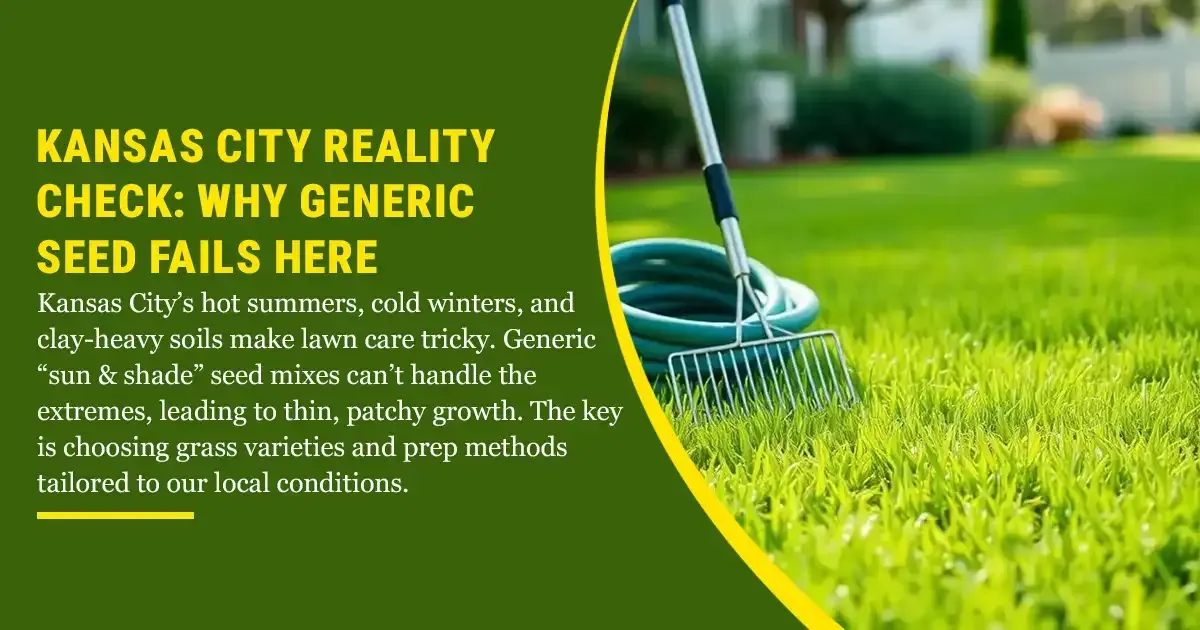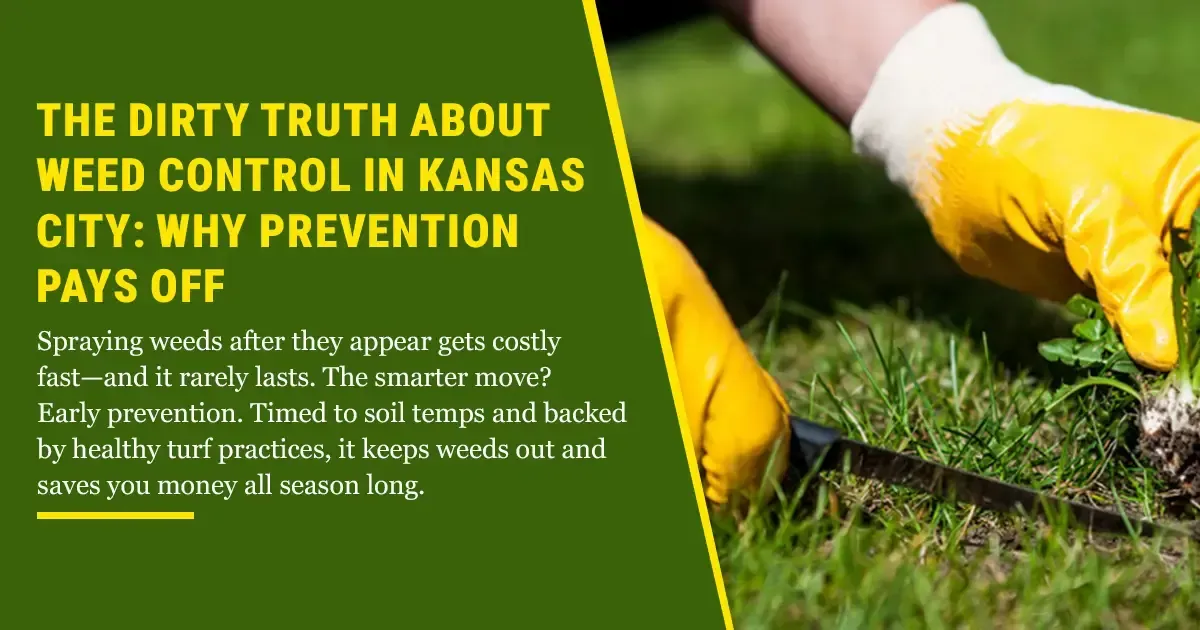Budget-Friendly Lawn Care Solutions
Unlocking Affordable Lawn Perfection: Discover Cost-Effective Lawn Care Strategies Without Sacrificing Quality
Understanding the Cost Challenges in Lawn Care
Many homeowners dream of a lush, healthy lawn but are left feeling frustrated by the often soaring expenses of maintaining it. Lawn care isn’t just about mowing the grass—it involves careful planning, quality materials, skilled labor, and often, the use of specialized equipment. With household budgets tightening, making informed decisions about lawn maintenance has become critical for ensuring both affordability and quality. In today’s economic landscape, managing these costs is more important than ever.
The concern isn’t only about finding affordable lawn care—it’s about doing so without sacrificing the visual appeal and benefits that come with a well-manicured yard. Across the country, homeowners face a common dilemma: how can one invest in their property’s curb appeal without breaking the bank?
Eye-Opening Lawn Maintenance Statistics
Recent data emphasizes the financial strain many face when trying to keep up with lawn care expenses. According to a report by HomeAdvisor overall lawn care costs have seen a steady increase over the past few years. Homeowners report that even basic maintenance services have become 15-20% more expensive annually in many regions.
These rising costs are not only reflected in regular maintenance but also in specialized treatments such as fertilization, pest control, and seasonal landscaping. Importantly, the data suggests that nearly 60% of homeowners feel that the cost of professional lawn care now plays a significant role in their monthly budgets. Clearly, the financial aspect of lawn care is a pressing concern, with the doubling of expenditures often putting quality service out of reach for many.
The True Cost of Traditional Lawn Care
When evaluating traditional lawn care, the price tag reflects much more than simple labor and materials. Several factors contribute to the heightened expenses:
- Labor and Expertise: Skilled professionals command competitive wages. Training, certification, and experience add up to higher service fees. The expertise required for proper pest management and fertilizer application is something that DIY attempts can rarely replicate reliably.
- Quality Materials and Equipment: The best fertilizers, pest control solutions, and state-of-the-art mowing equipment do not come cheap. Investing in top-tier supplies ensures that lawns remain healthy and robust, but it also means an increase in upfront costs.
- Seasonal Variations: Different times of the year demand specific kinds of maintenance. For example, summer might require extra fertilizers to boost growth, while winter services might include snow removal or pre-winter treatments to protect the lawn. As a result, homeowners often face varied and sometimes unexpected costs throughout the year.
Neglecting regular maintenance to avoid costs may initially save money but can lead to a range of avoidable expenses down the road. Preventative care is often more cost-effective than the extensive and expensive repairs required after neglect.
The Hidden Consequences of Skimping on Lawn Care
While cutting costs might seem attractive at first, a poorly maintained lawn can inflict lingering consequences. Beyond the immediate visual impact, several subtle issues can arise:
- Decreased Property Value: A well-kept lawn significantly boosts your home’s curb appeal. Studies have shown that properties with well-maintained exteriors tend to sell for higher prices than those with neglected landscaping. As noted in various industry studies, buyers often judge overall property value based on lawn condition—a factor that can make a striking difference during resale.
- Environmental Impact: Poor lawn care, especially when it involves sporadic or improper chemical usage, can harm local ecosystems. Chemicals that are not used correctly may pollute local waterways or damage soil health, leading to long-term environmental concerns. Sustainable practices not only preserve your property’s natural beauty but also protect the broader community.
- Increased Long-Term Costs: Skipping regular treatments can invite a host of problems including pest infestations, fungal infections, or soil degradation. When these issues start to take hold, restorative measures often cost significantly more than consistent, moderate spending on proper care. Numerous case studies have shown that proactive maintenance can reduce long-term costs and help homeowners avoid emergency interventions.
Addressing these hidden challenges early on can prevent a cascading series of costs that not only affect your finances but also diminish the overall health and appearance of your landscape.
Proven Strategies for Affordable Lawn Care
Homeowners seeking affordable lawn care need actionable and realistic strategies that bridge the gap between cost management and quality service. The following practices can help craft a lawn care plan that is both effective and budget-friendly.
Creating a Detailed Lawn Care Calendar
One of the best strategies is developing a comprehensive calendar for all required maintenance tasks throughout the year. Breaking down the year into manageable segments and scheduling basic tasks—mowing, watering, fertilizing, and pest control—allows you to spread the workload and the cost evenly. This method helps reduce the need for emergency treatments or rushed, expensive service calls.
Annual Assessments and Preventative Maintenance
Investing in an annual assessment can reveal hidden issues before they escalate. Routine check-ups allow you to identify nutrient deficiencies, pest infestations, or early signs of disease. By addressing these problems early, you avoid the costly restorations that often follow neglect.
Budget-Friendly DIY Practices
For the hands-on homeowner, a mix of DIY practices can cut costs. Simple techniques like basic mowing, watering routines, and mulching can be performed with minimal equipment. However, be cautious when taking on more advanced tasks that may require professional expertise. Striking a balance between DIY and professional services can maintain quality while controlling expenditures.
Leveraging Technology for Efficiency
Modern technology offers several tools to streamline lawn care. From smartphone apps that remind you when to water or fertilize your lawn to online platforms that offer budget management assistance, technology can play a significant role in achieving affordable lawn care. Investing in a few reliable digital tools may enable you to monitor your lawn’s health accurately and efficiently.
Establishing a Reliable Routine
Consistency is key in lawn maintenance. Establishing a weekly or biweekly routine ensures that problems are managed before they become significant. Consistent care often results in fewer drastic measures later, thus reducing emergency expenses.
Training and Informational Resources
Educating yourself on the best lawn care practices can significantly reduce costs. Many agricultural extension offices and online resources provide free or low-cost advice tailored to your region’s climate and soil conditions. Familiarize yourself with best practices—attending local workshops or subscribing to home and garden newsletters can further enhance your expertise.
Visual Aid: Lawn Care Checklist
Imagine a neatly organized checklist that you update each season, ensuring no aspect of lawn maintenance is overlooked. A visual tool like this can serve as a quick reference guide, making sure you're meeting cost-effective standards consistently. Incorporating graphs or infographics from reputable sources can highlight seasonal tasks, ensuring you’re well-prepared without overspending.
Leveraging Professional Expertise for Better Value
Engaging with professionals to optimize your lawn maintenance may seem like an additional expense, but it often leads to greater long-term savings. Expert lawn care providers use data-driven practices and have access to industry-grade materials and equipment. A well-planned schedule provided by experienced professionals helps maintain optimal lawn health and prevents cost escalations. Trusted professionals can provide tailored guidance and adjust strategies as needed, ensuring your yard continues to look its best throughout the year.
For many homeowners, forming a partnership with a trusted provider has proven to be a game-changer in maintaining lawn health without overspending. For instance, a collaboration with a local company such as LawnScape Specialists understand your region’s unique soil and weather conditions which can lead to a more efficient application of water, fertilizers, and pest control solutions. In many cases, this strategic approach not only saves money but also enhances the overall quality of the lawn care received.
Innovative Lawn Care Techniques That Save Money
In recent years, numerous innovative techniques have emerged that not only improve lawn health but also cut costs significantly over time. Embracing these advancements can be particularly beneficial for those who want a professional look while keeping the budgets under control.
Smart Irrigation Systems
Water misuse is a common issue that drives up lawn care costs, particularly in hotter climates. Smart irrigation systems adjust watering schedules based on weather conditions and soil moisture, ensuring that water is used only when needed. The initial investment in a smart irrigation system may seem high, but the long-term savings on water bills and reduced risk of overwatering pests make it an attractive option.
Low-Input Landscaping
Incorporating low-input landscaping strategies can also be a cost-saving measure. This includes designing lawns that require less water, shorter or less frequent mowing, and incorporating native plant species that thrive under local conditions. These changes reduce the need for constant maintenance and resource-intensive interventions. Adoption of such techniques has shown that homeowners can drastically reduce maintenance fees while still enjoying a vibrant landscape.
Seasonal Adjustments and Flexible Plans
Flexibility is essential in managing lawn care costs. Adjusting treatments seasonally—opting for lighter maintenance during milder weather and ramping up only when necessary—can help balance quality and affordability. For example, limiting fertilizer applications during periods of heavy rainfall minimizes waste and reduces both the environmental impact and overall costs. Insights from local weather patterns and predictive analytics can guide these adjustments, ensuring that your lawn receives only the necessary care at any given time.
Taking the First Step Towards Budget-Friendly Lawn Care
Getting started on your journey to affordable lawn care doesn’t need to be overwhelming. Below are several actionable steps to help you begin the process:
- Start by assessing your current lawn condition. Take note of any areas showing signs of poor health, such as discoloration or patchy growth.
- Create a seasonal lawn care calendar that includes key tasks such as mowing, watering, fertilizing, and pest control. Use a simple spreadsheet or a dedicated smartphone app to track these tasks.
- Research local pricing for both DIY supplies and professional services. Compare costs to determine where your efforts might save money and where professional expertise is essential.
- Set a realistic budget for your lawn care needs, accounting for both routine maintenance and seasonal adjustments. Look for flexible spending strategies and consider a mix of DIY and professional services as needed.
- Consider a free professional assessment to get a detailed plan for your lawn’s needs. Many local providers offer one-time consultations that can pinpoint areas needing improvement and suggest cost-effective solutions.
- Maintain a record of expenses and improvements. Tracking the performance of your lawn care strategies will help you adjust your budget over time and ensure you’re getting the best value for your spending.
By taking these steps, you’re not just investing in a greener space—you’re managing your home’s assets strategically and responsibly.
Reaping the Benefits of Smart Lawn Investment
A smart investment in lawn care pays off in ways beyond mere cost savings. A well-maintained lawn offers a pleasant outdoor space for family activities, enhances property value, and even contributes to community well-being. Consistent, high-quality lawn maintenance safeguards your home from potential hazards like soil erosion and weed overgrowth, thereby preserving both the aesthetic appeal and structural integrity of your property.
Investing wisely in lawn care ultimately builds long-term resilience against the rising tide of maintenance costs. With proactive care, homeowners experience fewer major repairs and can enjoy a peaceful, visually appealing environment without the stress of unexpected expenditures. By integrating modern practices and flexible maintenance plans, you position yourself to reap both immediate benefits and future savings.
Why Choose a Trusted Lawn Care Partner?
Choosing the right professional support means aligning with a provider who truly understands your challenges and can help refine your lawn care strategy. Local experts often translate cost concerns into actionable, custom-tailored plans that fit specific budgets. They can help optimize watering schedules, apply treatments at the right intervals, and suggest adaptive techniques for seasonal changes.
Implementing structured, affordable lawn care strategies not only supports the health of your landscape but also reinforces smart long-term financial planning. For homeowners keen on protecting their curb appeal without overspending, partnering with professionals who have a track record of efficient, cost-conscious service is the key to sustained success.
For instance, partnering with a well-regarded expert like this trusted local provider demonstrates a commitment to quality results at a competitive price, ensuring your lawn receives the precise care it needs without unnecessary expenses.
Frequently Asked Questions
What are the main cost drivers in professional lawn care?
The primary cost drivers include labor, quality of materials and equipment, and the specialized techniques necessary for pest control and fertilization. Seasonal variations and weather conditions also contribute significantly to overall expenses. Understanding these factors helps in planning a balanced approach toward prevention and maintenance.
How can I save money without compromising lawn quality?
Developing a detailed lawn care calendar, conducting annual assessments, and combining cost-effective DIY methods with strategic professional support are key ways to maintain quality while managing expenses. Embracing smart irrigation systems and low-input landscaping can further reduce ongoing costs without sacrificing lawn health.
Can tech tools really help reduce overall lawn care costs?
Yes. Smart technology such as soil moisture sensors, automated irrigation systems, and lawn care management apps can closely monitor your lawn’s needs and only trigger maintenance activities when necessary. These tools help ensure that water, fertilizers, and other resources are used efficiently, ultimately reducing wasted expenditures.
When is it best to hire professional lawn care services versus DIY?
Hiring professional services is advisable for complex tasks such as pest control, disease management, or when you notice recurring deficiencies in your lawn. For regular mowing and basic upkeep, DIY methods can be effective if you remain consistent and informed through reliable resources. Consider a mix of both approaches for optimal results.
What long-term benefits can I expect from consistent lawn maintenance?
Besides fostering a visually appealing outdoor space, consistent lawn maintenance helps to protect your property value, improves the overall environment, and reduces the likelihood of costly repairs due to neglect. Over time, a well-cared-for lawn leads to lower maintenance emergencies and contributes to a healthier ecosystem around your home.
Conclusion
In today’s cost-conscious world, achieving a beautiful lawn affordable for every homeowner is completely within reach. The rising expenses of traditional lawn care make it essential to adopt strategies that balance cost with quality. By understanding the full range of expenses—from labor and materials to the hidden costs of neglect—you can develop a proactive maintenance schedule that ensures long-term savings and aesthetic pride.
Adopting a detailed care calendar, leveraging modern technology, and integrating flexible strategies sets the stage for both environmental benefits and financial relief. The smart investment in regular maintenance pays off down the road by preserving or even enhancing property value, ensuring a safe and healthy outdoor space, and avoiding the pitfalls of urgent, expensive corrections.
For those ready to take control of their lawn care budget and secure the lush, vibrant outdoor space they deserve, the first step is to assess your current routine, explore cost-effective strategies, and consider targeted professional insights when needed. Taking these actions helps protect your investment, reduces long-term expenses, and creates a garden environment that provides satisfaction and security year after year.
If you’re ready to invest in a lawn care plan that combines careful financial management with visual excellence, now is the time to act. Evaluate your current strategies, research local options, and set up a cost-effective maintenance schedule. This proactive approach is the cornerstone of safeguarding your property’s appeal while keeping expenses in check.
Remember, successful lawn care isn’t about cutting corners—it’s about being smart with your investments. With consistent effort and the right combinations of DIY and professional input, you can achieve a healthy, attractive lawn without compromising on cost. The future of lawn care is affordable, sustainable, and within reach.
By embracing these cost-effective strategies and thorough planning, you are not only enhancing your home's aesthetics but also ensuring that every dollar spent contributes to long-term value. With careful analysis, consistent routines, and occasional expert advice, maintaining the perfect lawn is more feasible than ever.
Taking the next step toward improving your lawn care routine can serve as a meaningful investment in both your property and your quality of life. Start planning today, implement these actionable strategies, and watch your lawn evolve into a sustainable, low-cost, and inviting outdoor space.
For readers who are ready to explore more detailed resources on achieving cost-effective lawn care solutions, consider visiting related internal pages on our resource library. These include guides on seasonal maintenance, eco-friendly care practices, and detailed checklists to keep you on track. Such resources not only extend your knowledge but also help in pinpointing specific cost-saving opportunities tailored to your area.
Regardless of whether you lean towards a DIY approach or value the occasional professional opinion, keeping informed and proactive is the key to unlocking affordable lawn perfection.
Final Thoughts and Call to Action
Your lawn represents a significant investment, not only in terms of money but also in the comfort and value it adds to your home. By carefully balancing quality and cost, you ensure that your outdoor space remains an asset without becoming a financial burden.
Take action today by re-evaluating your lawn care routine, adjusting maintenance schedules, and exploring eco-friendly and technology-enhanced strategies to save costs in the long run. A balanced approach, grounded in data and proactive steps, will help you sidestep the pitfalls of escalating maintenance fees and protect your home’s investment for years to come.
If you’re actively seeking a partner to help design a customized maintenance plan that fits within your budget while delivering long-lasting results, consider reaching out to a trusted local expert like LawnScape Specialists. Their tailored insights and methodical approach to lawn care can make all the difference. Embrace smart, affordable lawn care now and step into a future where quality meets cost efficiency.
By following these guidelines and actionable strategies, you have everything you need to transform your lawn into a sanctuary of beauty and fiscal responsibility. Whether you are new to lawn care or looking to refine your existing approach, the journey toward affordable lawn perfection is filled with practical steps that yield significant, lasting rewards.
Now is the time to take charge of your lawn care plans—review your options, set a clear budget, and begin implementing these strategies. A lush, healthy, and affordable lawn awaits, and every step taken today contributes to a brighter, greener tomorrow.










